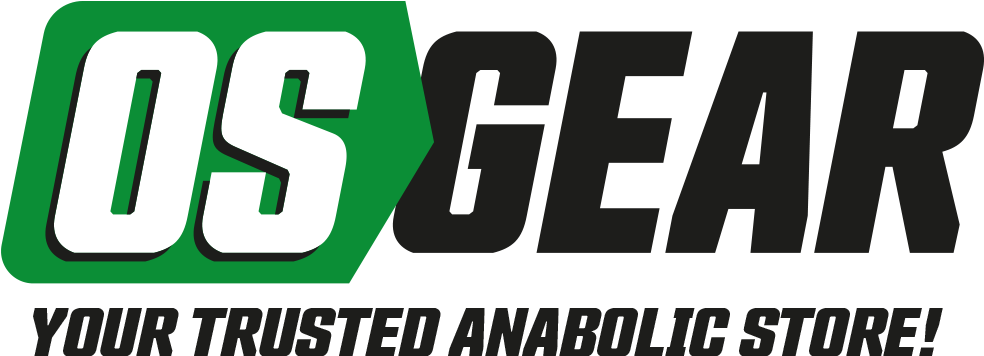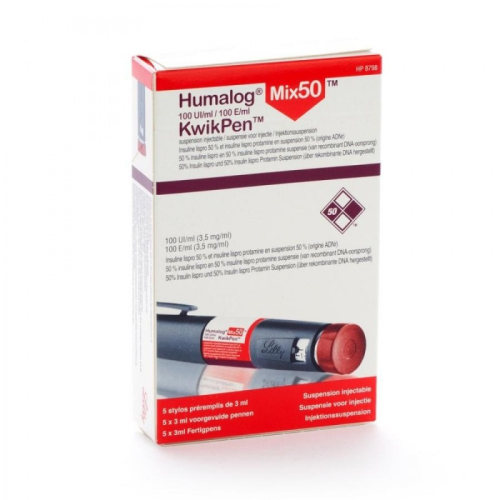Humalog Kwikpen Mix 50
- Brand: Lilly
- Product Code: Humalog Kwikpen Mix 50
- Availability: In Stock
-
$129.00
CLASSIFICATION
Hormone and Synthetic Substitute / Antidiabetic Agent
ACNE
No
WATER RETENTION
No
HBR
No
HEPATOTOXICITY
No
AROMATIZATION
No
MANUFACTURER
Lilly
WAREHOUSE
International Warehouse 2
SUBSTANCE
Insulin Lispro
,
Insulin Lispro Protamine Suspension
,
Insulin is a vital and potent anabolic hormone produced by all humans, playing a crucial role in individual health. While it is naturally made by the body, those with diabetes often require additional insulin from external sources. Some athletes also use it to promote lean muscle growth, but caution is necessary as improper usage can be life-threatening.
Although insulin is naturally produced by the body, external insulin was first introduced in the 1920s, initially derived from the pancreases of dogs and later from cattle and pigs. While purity was a concern, its life-saving potential outweighed the risks associated with impurities. By the 1970s, advancements improved insulin's purity significantly, leading to the introduction of synthetic insulin in 1975. Subsequently, in 1982, Humulin-R was launched, representing a perfect replica of human insulin, receiving FDA approval.
Functions and Characteristics of Insulin:Insulin, classified as a peptide hormone, is secreted by the pancreas. Its primary function includes the regulation and utilization of glucose, amino acids, and fatty acids, while also preventing the breakdown of glycogen, fat, and protein.
For diabetic patients, there are two main types of diabetes that necessitate insulin. Type I diabetes occurs when the body fails to produce sufficient insulin naturally, while Type II diabetes involves the body's inability to recognize or respond effectively to insulin, often influenced by obesity.
Insulin positively affects the liver by encouraging the conversion of glycogen to glucose and inhibiting the creation of non-carbohydrates into glucose. Its actions facilitate glucose absorption in cells, supporting muscle growth. Elevated insulin levels are associated with improved protein synthesis and enhanced bone density, in addition to increasing the production of Insulin-Like Growth Factor-1 (IGF-1), another anabolic hormone akin to insulin.
Moreover, insulin has been linked to increases in Luteinizing Hormone (LH) and Follicle Stimulating Hormone (FSH), which may contribute to testosterone production, although this effect is relatively modest.
Effects of Insulin:The primary effect of insulin, regardless of diabetes type, is blood sugar regulation. Its strong anabolic and anti-catabolic properties can be advantageous for various athletes, but off-label use may result in significant fat accumulation and potentially life-threatening situations if not properly managed.
Despite the associated risks, some athletes value insulin for its anabolic effects; however, they must carefully manage body fat levels. High insulin levels hinder fat burning, requiring individuals to adhere to a strict, carefully planned diet. Proper calorie and fat management ensures that glucose and protein are directed toward muscle rather than fat storage. Individuals may find it best to administer insulin immediately after intense weight training sessions alongside food for optimal results.
When used correctly, insulin can facilitate substantial muscle growth in a relatively short timeframe. While some may struggle to control fat gain, it is achievable under favorable conditions. The combined use of anabolic steroids and Human Growth Hormone (HGH) is typically recommended in performance settings for superior results and fat management.
Side Effects of Insulin:Insulin may lead to several side effects primarily associated with hypoglycemia. For diabetic patients, this usually poses little risk with appropriate dosing; however, in performance scenarios, it can be a significant concern. Although hypoglycemia may not seem severe at first glance, it can lead to numerous complications, including death.
Hypoglycemia occurs when blood sugar levels drop too low and is the main side effect linked to insulin. Common symptoms include:
If symptoms of hypoglycemia appear, immediate consumption of fast-acting carbohydrates, such as candy or sugary drinks, is advised. Individuals should not sleep after administering insulin unless they are sure their blood glucose levels are stable, as this could lead to severe hypoglycemia during sleep. If severe hypoglycemia occurs, medical assistance should be sought right away. Due to these potential side effects, it's advised never to self-administer insulin alone.
Many wonder how serious hypoglycemia can be. While it's often easily treatable, it can escalate to a diabetic coma, possibly resulting in unresponsiveness or even death. There have been numerous reported fatalities connected to performance-related insulin use.
Additionally, allergic reactions may occur in some individuals, resulting in swelling, itching, or irritation at the injection site. These effects are rare, but medical attention is warranted if they manifest. The hormone may also cause localized fat accumulation if injected repeatedly into the same area, emphasizing the importance of rotating injection sites.
Insulin Administration:When treating diabetes, the required insulin dosage can vary widely among patients, as individual needs fluctuate.
For performance enhancement, several forms of insulin exist, typically categorized as short-acting or long-acting. Fast-acting insulin options, such as Humulin-R, Humalog, and Novolog, are the most rational choices for athletes.
Humalog acts quickly, showing effects within 15 minutes post-injection, peaking between 30 to 90 minutes, with a total activity duration of 3-5 hours. Novolog and Humulin-R have similar timelines but act slightly slower, with Humulin-R being the slowest. While Novolog may be hard to procure, Humalog generally requires a prescription for access, while Humulin-R is available over the counter, making it a common choice among athletes.
The typical insulin dosage for performance enhancement is 1 IU for every 10 pounds of body weight. First-time users should begin with a lower dose of 1 IU post-workout, gradually increasing by 1-2 IU daily until they find a comfortable level. If hypoglycemia symptoms arise that are hard to counteract even with sugar intake, the dosage may be too high. Many individuals do not require the full 1 IU per 10 pounds due to varying tolerance levels.
Once an optimal insulin dosage is established, it should be administered immediately following weight training for maximum effectiveness. After injection, individuals typically need at least 100 grams of carbohydrates, with solid and liquid carbs consumed about 15 minutes later, alongside 40-50 grams of protein.
While 100 grams of carbs is a baseline, users may need more as insulin doses increase. It's essential to remember that insulin does not require excessive amounts to be effective, so starting with lower doses and gradually adjusting is advisable.
Post-injection, it is crucial to keep fast-acting carbohydrates accessible in case of hypoglycemia symptoms. A prudent insulin user should never inject without a sufficient carbohydrate source nearby. If symptoms appear, carbohydrates should be consumed until they subside. Regardless of hypoglycemia symptoms, another meal should be prepared soon after the post-injection meal.
Insulin Evaluation:Insulin plays a critical role in health and proper bodily functions. When used as a performance enhancer, it can facilitate muscle growth significantly; however, its application carries risks. Many men may find they can achieve their performance goals without insulin and benefit their physique more in the long run by avoiding it altogether. Nevertheless, it remains popular within competitive bodybuilding communities, although those involved often possess exceptional genetics and utilize a variety of other hormones.
Additionally, some athletes not focused on physique enhancement may turn to insulin since it is not detectable in drug tests, using it alongside HGH and possibly low doses of testosterone and thyroid medications to navigate testing challenges. However, their overall insulin dosage tends to remain low.

